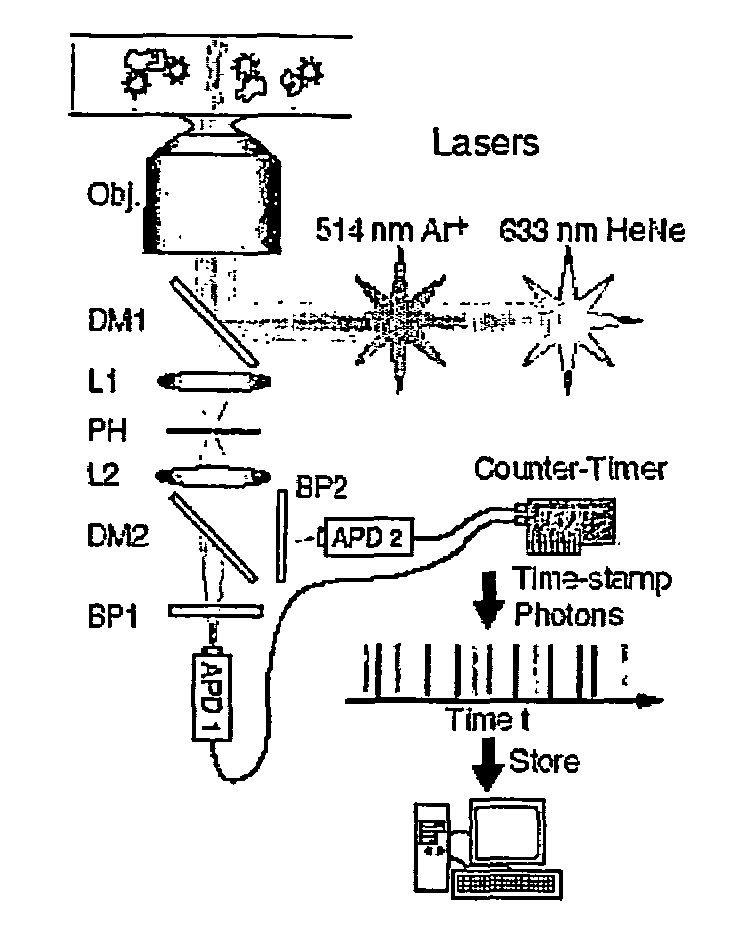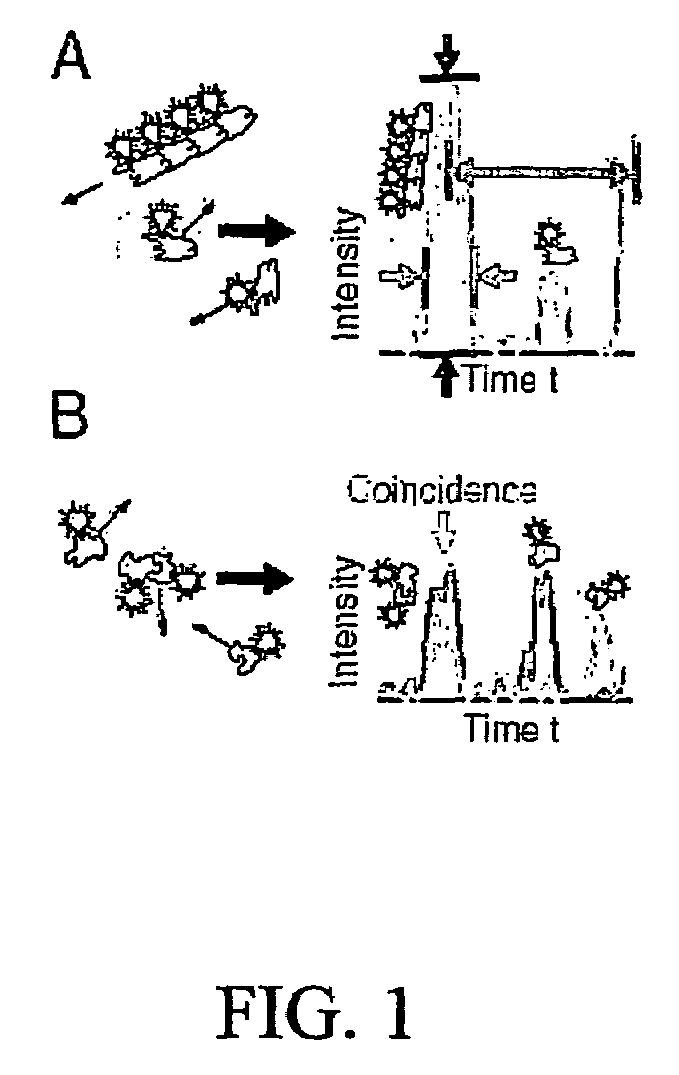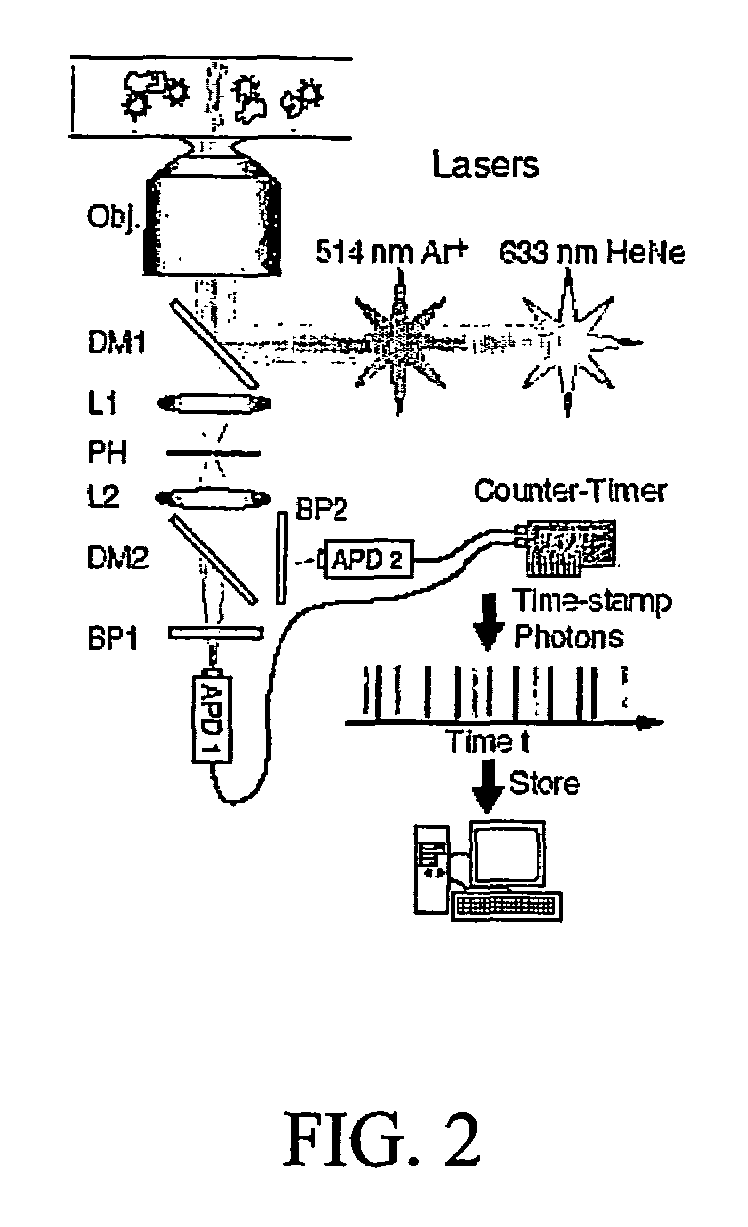Monitoring molecular interactions using photon arrival-time interval distribution analysis
a technology of photon arrival and distribution analysis, applied in the field of fluorescence correlation spectroscopy, can solve the problems of large change in size, long diffusion time, and inability to measure binding using diffusion constants, and achieve the effect of convenient visual representation of data
- Summary
- Abstract
- Description
- Claims
- Application Information
AI Technical Summary
Benefits of technology
Problems solved by technology
Method used
Image
Examples
Embodiment Construction
[0042]PAID in accordance with the present invention is based on the discrete format of single photon-timing data (FIG. 2), which treats signals as photons streams, rather than analog signals. Using a dual-channel microscope with avalanche photodiode detectors (APDs), streams of electronic pulses corresponding to single photons are generated, and the arrival time of each pulse is recorded, resulting in streams of photon-arrival times, where tA1 is the arrival time of the ith photon from APD-channel A. The photon stream is represented as a sum of Dirac delta functions (which allow representation of discrete events over the continuous variable (t):
[0043]IA(t)=∑i=1NAδ(t-tAi).(1)
where NA is the total number of photons detected in channel A; the number of photons arriving between times tmin and tmax is
[0044]n=∫tmintmaxⅆtIA(t).
All sources of uncertainty in specifying arrival times are shorter than the >1 μs timescale studied here (uncertainty arises from the Heisenberg uncertainty p...
PUM
| Property | Measurement | Unit |
|---|---|---|
| distance | aaaaa | aaaaa |
| time | aaaaa | aaaaa |
| time | aaaaa | aaaaa |
Abstract
Description
Claims
Application Information
 Login to View More
Login to View More - R&D
- Intellectual Property
- Life Sciences
- Materials
- Tech Scout
- Unparalleled Data Quality
- Higher Quality Content
- 60% Fewer Hallucinations
Browse by: Latest US Patents, China's latest patents, Technical Efficacy Thesaurus, Application Domain, Technology Topic, Popular Technical Reports.
© 2025 PatSnap. All rights reserved.Legal|Privacy policy|Modern Slavery Act Transparency Statement|Sitemap|About US| Contact US: help@patsnap.com



